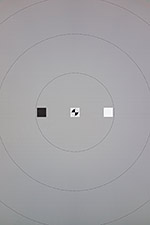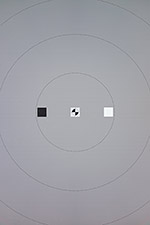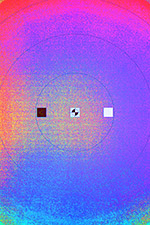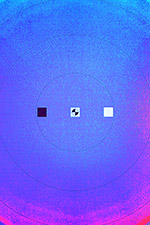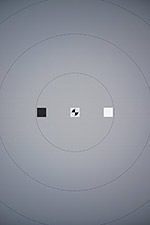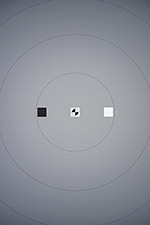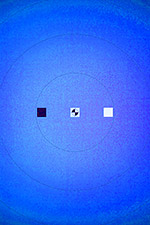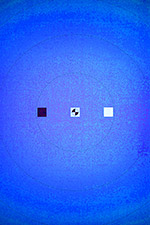Newsletters |
|
| Archive With Subject Listings |
|
Advertising |
|
| Media Kit Circulation, Ad Rates, Schedule |
|
More Information |
|
| Subscriber Services Subscribe, Unsubscribe |
|
| FAQ Frequently Asked Questions |
|
Connect With IR |
|
Digital Photo Newsletter Vol 15, No 2Date: January 25th 2013 FORMAT NOTE: AOL NOTE (sorry, lots of notes this time): We had problems with delivery to about half of our AOL subscribers with the last issue again. If you didn't receive yours, visit the online archive at the link below to view it in your browser. AOL tells us that they've fixed the problem, I guess we'll see what happens when I hit "send" here in a few minutes... If you have any trouble reading this version because of the HTML, you can read it in the online archive here: To subscribe, unsubscribe or change your email address, visit:
Support the Newsletter! ====================================================================== Welcome to the 350th edition of the Imaging Resource Newsletter. This issue we tell the other side of the story of famed photographer, "Mad" Frank Hurley, who accomplished some pretty amazing things -- including performing some early photo manipulation -- after he returned from his fated Antarctic expedition aboard the Endurance with Sir Ernest Henry Shackleton. Even more importantly, we feature an excerpt of our pro photographer review of the Sony Alpha A99 and ask you to check out our new review format and Scott Rinckenberger's stunning photos on our site, with the hopes that you'll let us know what you think. TOPICS SPONSORS * Sony * ---------------------------------------------------------------------- FEATURE: "Mad" Frank Hurley's photographic life beyond the Endurance By Steve Meltzer "Hurley is a warrior with his camera, and would go anywhere or do anything to get a picture." (See the article with a selection of Frank Hurley's iconic photos here: http://http://www.imaging-resource.com/news/2013/01/25/beyond-endurance-the-life-of-mad-frank-hurley-australian-photographer) Over the next six years, Hurley established himself as a documentary filmmaker and photographer, and in 1911, he joined his first Antarctic expedition. On this trip, he discovered that he loved working under arduous conditions. Returning to Sydney, he assembled the film he had shot into a movie, "Home of the Blizzard." This reality flick was a hit and when explorer Sir Ernest Shackleton saw it, he immediately asked Hurley to join his Imperial Trans-Antarctic Expedition. Hurley signed on at once and was soon loading several tons of photographic gear aboard Shackleton's ship, the Endurance. The expedition planned to be the first to cross the Antarctic via the South Pole, and in August 1914, it set out from England, less than two weeks after the outbreak of World War I. The expedition was a disaster. The ship quickly became trapped in the Weddell Sea, Antarctica's huge iceberg filled bay. Shackleton and his 28-man crew stayed with the ship until it was totally crushed by the ice. As the Endurance sank, Hurley repeatedly dove into the icy waters to rescue his glass-plate negatives. Months passed, and finally at the end of the Antarctic winter Shackleton and a few crew members set out in a small skiff to find help. Miraculously, after a journey of 800 nautical miles, they reached a whaling station on South Georgia Island and were able to return and rescue the crew. All 29 men survived. Frank Hurley photographed the entire misadventure, producing his most famous photographs: A series of images showing the gradual destruction of the Endurance by the pack ice. As always, he was fearless, climbing iced masts, trekking out on the pack ice -- even during the long frigid Polar night -- to get his pictures. Most of Hurley's pictures were black-and-white, glass-plate negatives or black-and-white roll film negatives shot with a Kodak Folding Pocket Camera Model 3A, and a Vest Pocket Kodak that was the only camera retained after Endurance sank. EARLY COLOR ADOPTER AND PHOTO MANIPULATOR But remarkably, Hurley also took color photos on this expedition. He was one of the early adopters of the Paget Process, a color system invented in 1910. It used two glass plates -- one a normal black-and-white glass plate, the other striped with a series of red, green and blue filters, which created a rippled pattern on the black-and-white negative. A glass-plate positive was made from the negative, and when viewed through a similar filter or projected through another, stronger, matrix filter, produced a full color image. After the rescue in 1916, Hurley traveled to England with his Antarctic photographs and in early 1917 produced another documentary, "In the Grip of the Polar Ice," re-released in 1933 as "Endurance." But he had little chance to enjoy its success. World War I was dragging on, and in August, Hurley joined the all-volunteer Australian Imperial Force as an official photographer with the rank of honorary captain. Crossing the English Channel, Hurley was shocked by the carnage he found in France and Belgium. However, despite his disgust, he responded to the chaos, saying that the battlefield was "a weird and wonderful sight, with the destruction wildly beautiful." LOVE AND OTHER ADVENTURES Subsequently, the army sent Hurley to the Middle East, where he was to take aerial photographs of the battle of Jericho. He shot many color images there and decided to smuggle some of them home, rather than turn them over to the army. When he left the Middle East, he took something else back to Sydney: a young opera singer he met in Cairo, Egypt, named Antoinette Rosalind Leighton. They married after a whirlwind 10-day courtship. ---------------------------------------------------------------------- Enjoy this story? Check out Steve's other historical photography articles: - The obsessive eye of Eug�ne Atget: Master photographer's images of "Old Paris" still resonate. http://www.imaging-resource.com/news/2013/01/18/The-obsessive-eye-of-Eugene-Atget-master-photographers-images-of-Old-Par) - The Birth of Travel Photography: Du Camp and Flaubert's 1849 trip to Egypt.(http://www.imaging-resource.com/news/2012/10/30/the-birth-of-travel-photography-du-camp-and-flauberts-1849-trip-to-egypt) - Ghosts of World War II: Haunting, manipulated photos merge the past with the present. (http://www.imaging-resource.com/news/2012/11/06/ghosts-of-world-war-ii-haunting-photos-merge-the-past-with-the-present) - Film is dead. Long live film! A look at the future of the past. (http://www.imaging-resource.com/news/2012/11/02/film-is-dead-long-live-film-a-look-at-the-future-of-the-past-video) - Before Photoshop: How photographers have been manipulating images for more than 150 years. (http://www.imaging-resource.com/news/2012/09/28/before-photoshop-how-photographers-have-been-manipulating-images-for-years) Camera Review: Pro Shooter's Report - Pushing the Sony A99 to the Extremes (You can check out our full review of the Sony A99, complete with breathtaking gallery images here: http://www.imaging-resource.com/PRODS/sony-a99/sony-a99A.HTM. You'll also see our new review format. Be sure to tell us what you think of the review and format on our A99 discussion page: http://www.imaging-resource.com/PRODS/sony-a99/sony-a99DISCUSS.HTM. We appreciate your feedback!) By Scott Rinckenberger I am not a camera reviewer by trade. The very idea of framing up an image on a tripod and shooting every possible ISO makes my skin crawl. So, why then would you continue reading a review from yours truly on the recently released Sony Alpha A99? Because great images aren't made in test labs under ideal conditions. They are real moments, often brief and fleeting captured in the world around us. I love this pursuit. I'm a photographer and an outdoor adventurer, completely focused on images and only interested in technology as a means by which to create. When the technology enhances my creativity or improves my execution, I'm in bliss; when it hinders, I look for the shortest route to a device that doesn't. On paper, Sony's exciting new flagship full-frame camera was enough to pique my interest. It's been billed as a fast shooting, fast focusing, full-frame format, weather-sealed, video friendly, fully customizable camera in a smaller and lighter package than anything else that's come before. It was a similar combination of elements that convinced me to adopt the Sony A77 less than a year ago, a move that I neither regret, nor do I entirely celebrate. For reasons I am unable to articulate, the A77 has always felt one step shy of being a legitimate professional tool, but good enough that when Sony delivered a bigger, better camera -- one tailored to the needs of the working pro -- I decided to give them the benefit of the doubt and give it a go. As is my habit whenever my schedule allows for self-assigned shooting, I took a good look at the weather, called up a crew of fellow outdoor enthusiasts and made for the wild places of the Pacific Northwest looking for landscapes and action that would challenge my skills and give my camera something to chew on. The first few days found me on the Washington coast shooting surfing and coastal landscapes while traveling great distances in an attempt to dodge record-breaking rainstorms. By the following week, the weather had taken a turn for the better resulting in the advent of a new ski season and a foray to a remote backcountry cabin high in the North Cascade mountains for some ski touring and mind-boggling scenery. FIRST IMPRESSIONS The Sony A99 is a solid feeling camera with professional handling and controls on the body that will put a seasoned photographer at ease. Key functions are all handy and (mostly) where you would expect them to be. The LCD screen on the back and the electronic viewfinder in the eyepiece both look crisp and sharp with great detail and color. As a long time Nikon shooter, and the owner of a Sony A77, I was quickly able to navigate both the button layout on the camera's exterior and the deep (and sometimes complex) menus on the inside. In fact, the resemblance to the A77 is uncanny, they're almost identical at a glance. Yet when examined more closely, one finds small tweaks that are pleasing to see. An ISO standard hot shoe, a larger screen, and I dare say, a more robust feel. Never one to fiddle too much, I set the time and date, my image quality to RAW, my shooting mode to Manual and my focus to AF-D (more on this later), then formatted a SanDisk Extreme Pro SD card and headed for the door. FIRST SHOTS Despite a day of relentless rain, the last hour of the day made a turn for the better as the sun made intermittent appearances from behind the towering rain clouds. High on a bluff above the surf breaks, I mounted the impressive Sony Alpha 70-400mm lens and set out to pick off some action shots of the surfers below, sniper style. Knowing that I needed a fast shutter to stop the action and to isolate camera-shake from shooting handheld at 400mm, I ramped the ISO up to 1600 and set the shutter to 1/1000. I selected the newly introduced AF-D dual phase detect focus which works with the 70-400mm, but surprisingly is not yet supported on the very popular Sony Alpha 70-200mm f/2.8 lens. The final setting I intended to use turned out to be my first big bummer of using this camera. The 10fps Tele-Zoom setting, which is accessed via the main command dial on the top of the camera, automatically converts the image size to a small jpeg. What?!? I had grown accustomed to making concessions when using the high-speed option on my A77, which requires that you utilize auto exposure instead of my standard manual settings, but the cheaper and smaller A77 still captures a RAW file format at full resolution in high-speed mode. Perhaps it's my error for not reading the fine print when looking at the frame rates of this camera, but as an action photographer, this came as a bitter blow. Not to be easily defeated, I stuck with my initial RAW file format and settled for the 6fps that is the standard high-speed continuous shooting mode. Later I learned through a fair bit of digging that the 8fps tele-zoom mode (somewhat tricky to find), shoots in RAW format at about 10 megapixels. Nonetheless, that's a big loss of resolution for a small frame-rate gain. I spent the latter part of the evening shooting some long exposures using a tripod and the 2-second self timer to keep the camera from wiggling when I released the shutter. I was very pleased to find a low ISO of 50 which creates very clean images and allowed me to have a great deal of latitude in setting my shutter speed for long exposures. I am also convinced that the electronic viewfinder is a great resource when shooting non-standard exposures as it gives you an incredibly good real-time impression of what your exposure settings will create. This is a huge advantage -- instead of shooting a 30-second exposure and then waiting for playback to see if your exposure was correct, you're able to see what a 30-second exposure will look like before you even pull the trigger. This goes for normal exposures as well. Select your shutter speed, your aperture and your ISO, and the viewfinder (or LCD screen) will supply a visual of the resulting exposure. Between this and keeping a histogram in your viewfinder while shooting, it's really hard to blow an exposure with this camera. DIGGING DEEPER The following morning at the coast delivered some decent light and small waves which gave me time to play more with the AF-D and Object Tracking with a Wide Focus Area with the 70-400mm lens. The combined effect of these features is a focus grid that looks like a fireworks show. It's total chaos with colored boxes of different sizes popping up all over the place, and while shooting this way, I couldn't have told you a thing about how well the system was working. But upon review, the images were consistently sharp. The voodoo works, if you've got a compatible lens and your subject is in the middle of the frame. My next outing was an overnight backcountry ski-tour to a fire lookout high atop a rugged peak in the North Cascade Mountains in Washington. By the time we had organized all of our ski equipment, food and camera gear and driven to the remote trailhead, it was late afternoon, meaning that we'd be climbing a good part of the mountain in the dark. Where some see a problem, I see a chance to test the high ISO performance of a new camera! So when, at dusk, the moon loomed huge as it rose over a beautiful slope on the eastern horizon, I set the ISO to 3200, zoomed my 70-300mm lens all the way to 300mm, set my shutter speed to 1/125, held my breath, crossed my fingers and pulled the trigger. This is a shot that, by conventional wisdom, you shouldn't be able to capture without a tripod. Well, I got it, thanks to the Sony A99's full-frame sensor and SteadyShot image stabilization! Later that evening I had occasion to run the ISO all the way up to 12800 as I tried to capture the feeling of the places I was visiting. In my experience, anything upwards of 1600 starts to take on an artsy feel, but to the credit of the A99, the noise was fairly grain-like and not terribly colorful. You might even get some street-cred if you convert these to black and white and send them to an avant-garde photography magazine in Paris. Yet all was not rosy as I pushed into the late night with the A99. I'll grant this: subjecting a camera to the environmental rigors of the inside and outside of a small fire lookout atop a tall mountain in winter weather at night is a harsh test, but that's exactly what I intended to put this camera through. I was disappointed to experience errors in data transfer to the card, a malfunction of the back screen and even an inactive on/off switch. Each of these problems was temporary and most acute when the camera was subjected to the cold temperature (24� Fahrenheit) and high humidity of the small hut. But needless to say, I'd rest easier if I never saw these technical snags. On the next day, dawn broke as spectacularly as a dawn can hope to break. Luck and good timing had me cozy in bed in a wonderfully well-kept fire lookout perched poetically atop a rugged and rocky mountain peak. My alarm alerting me to get outside and shoot was well received knowing what waited just steps outside my door. For an hour I worked through the process of shooting paradise in absolutely sublime conditions, first with a tripod and long exposures, and eventually handheld as daylight came to full form. The camera performed solidly and the images are a startling reminder of the beauty of nature. Before long, my cohorts, a couple of hard charging ski mountaineers, had emerged from the shelter and were chomping at the bit to ski and climb some of the bountiful peaks surrounding our humble abode. Even more excited by the fact that the first run would require only the effort of stepping into our skis and pointing them downhill from the summit-perched hut. I opted for a high angle overlooking the descent from the peak and attempted to shoot the action throughout the duration of the run from top to bottom. It came as a shock to me that while the 6FPS and the AF-D with the SAL24-70 2.8 lens were doing a great job of capturing the action, the buffer of the camera filled extremely quickly and the time it took to clear the buffer resulted in an astounding amount of lost frames. I was more judicious as the second skier dropped into the face, but before he was halfway through his run, I was again stymied by the slow writing process. A quick detour to present day: I have done some research on this lackluster speed performance, and have subsequently found a few things that will change my experience for the better on my next time out. First, there is a drastic improvement in write speeds when shooting with the very fastest cards available (specifically I've been testing the SanDisk Extreme Pro 95 MB/s card). I had an older Extreme card in the field and it was markedly slower. Also, once you move past about ISO 800, the capture speeds slow significantly as the camera processes and likely runs some noise reduction on the files on their way to the card. And finally, depending on the lens, the smaller aperture you use, the more mechanical steps are at play during the moment of capture, which could also affect the overall speed of shooting. To put all of this into concrete perspective, my metadata showed that I captured 19 images in 23 seconds while shooting the skiing sequence in the field. In stark contrast to this sorry number, I've since experienced speeds up to 57 frames in the same 23 seconds while testing the camera in my office; a full three times as many frames in the same time period! While this still doesn't stand up to the best in action cameras, it's a viable frame rate when the shutter is used with discretion. Given that I was shooting a low ISO (400) and wide open Aperture during the ski sequence, I'll be interested to find out through future experiences the extent to which weather/temperature plays a part in the cameras operating speed. PIXEL PEEPING Back to the shoot: For the rest of the day we enjoyed perfect weather and great conditions as we explored the mountains and I shot photos like a kid in a candy store. A few tweaks in my approach and a little bit of customization of the camera resulted in a solid partnership between man and device for the duration of the trip. Needless to say, I was excited to get back to my office and see what the partnership had yielded. In two words: I'm impressed. The combination of the A99's great full-frame sensor, a handful of top flight lenses, and some magical image stabilization in the form of Sony's Steady Shot technology yielded a pile of clean, sharp images of a technical quality that will stand up to anything at this price-point or below. The ISO looks great up to 1600. The dynamic range is really fantastic. Since I shoot exclusively in RAW file formats, I have no comment on the JPEG rendering, and will say that the ARW files come out of the camera a bit flat, both in terms of contrast and color, but this is an ideal state for high quality RAW files, allowing immense latitude for adjustment in post production. (See the IR lab's image-quality analysis of the Sony A99 here: http://www.imaging-resource.com/PRODS/sony-a99/sony-a99IMAGE.HTM. You can compare the shots side-by-side against competing models and examine a host of hi-res test shots.) MY TWO CENTS I had two questions in my head when I decided to give the Sony A99 a try. First, is this a competitive entry in the full-frame marketplace? And second, does it stack up well against its pro-level competition? To the first question, the answer is yes. The camera is an impressive piece of technology which shines in good conditions. The image quality is excellent, the overall control and operation of the camera feels professional, responsive and very customizable. The selection of Sony lenses available for this camera is complete and in the case of the Zeiss lenses, absolutely stellar. For photographers who want the cutting edge of technology and image quality this camera is very much in the running. To the second question, my answer is a qualified maybe. There are certain things about this camera that will change the paradigm for high-end photography. Image stabilization on the sensor, multiple phase-detect AF sensors,1080/60P video with stereo audio control, uncompressed HDMI output and Translucent Mirror technology are all at the very forefront of photographic technology, and in many ways eclipse the performance of even the top-of-the-line cameras from Canon and Nikon. On the other hand, I don't believe that this camera matches the high ISO performance or image quality of the Nikon D800, the speed and ease of use of the Nikon D4 or the 61 focus points and large screen of the Canon 5D Mark III. But most importantly, I'm not convinced that it has the build quality and durability to be a daily driver for a professional photographer putting the camera to the test in all conditions. That said, I'm an optimistic guy and a huge fan of the underdog, and nothing would please me more than to be convinced that this camera is a bomb-proof, go-anywhere performer. The A99 is a camera that I really want to love, but right now, it might feel better if we can just be really good friends. Over time, perhaps that friendship might blossom into something deeper and develop into a long-term committed relationship. (If you want to read IR's overall verdict on the Sony A99, with a complete list of pros and cons, go here: http://www.imaging-resource.com/PRODS/sony-a99/sony-a99CONCLUSION.HTM) Latest from the Lab: A Sneak Peek at What We're Testing We promised to bring our newsletter readers more behind-the-scenes info on what's coming out of our lab before the rest of the world hears about it, so this section will be a regular feature of the IR Newsletter going forward. We'll update you on test images we've recently uploaded but not yet shared publicly, as well as items that our website visitors may have seen, but that we think you'll be interested in nonetheless. This time around, we have info on a vexing video AF problem in a Sony SLR (SLT, by their terminology), a puzzle solved regarding a color tint issue in the Sony RX1, and a whole batch of cameras we've recently posted test shots from. Sony A77 video AF problems Sony RX1 tint issues The table above (assuming the HTML links do in fact work for you) shows thumbnails of original images displaying the problem, as well as versions of the same shots that had their color saturation boosted by 99% in Photoshop to make the color tinges obvious. The thumbnails above link to the full-sized shots if you click on them and want to analyze them yourself. These shots were captured with the camera on a tripod, looking at our flash range/uniformity target. The target was illuminated with our carefully-balanced HMI studio lights, so illumination was uniform to less than 1/10 EV. (The dark corners in the shots seen here are caused by shading (aka vignetting) in the camera itself.) To make it easier to see the problem, as well as to demonstrate that it wasn't caused by our lighting, senior tech Luke shot two images -- one with the camera positioned grip-up, the other with it mounted grip-down. Having the images inverted next to each other makes it relatively easy to see the subtle differences between them in their unmodified state, but the saturation-boosted versions make them glaringly obvious. What was puzzling was that we didn't see this phenomena in all our shots; in some there was no sign of it whatever. With typical IR zeal, we had to get to the bottom of this, and I'm happy to report that we finally did. The culprit? The RX1's automatic shading correction. The two sets of thumbnails above show the same subject, shot just moments later, but with shading correction turned off. The good news in this is this should be a relatively easy problem for Sony to correct: The shading compensation is being done in firmware, so it shouldn't be a big issue to update the code to change how it operates. We'll update you when we hear back from Sony on this. In the meantime, you can just disable the camera's shading compensation, and handle it in Photoshop. Recently uploaded test shots, with comments: Fuji XE-1 -- Full test shots uploaded. Just as promised, same superb X-Trans image quality, but a few hundred dollars cheaper than the Fuji X-Pro1. Canon EOS-M -- First Shots uploaded: As expected, virtually identical image quality as the Canon T4i (same sensor). We haven't gotten to re-testing the AF speed yet, though. The prototype was very slow, similar to the T4i in contrast-detect AF mode. We'll see if there have been any AF improvements in the production version or not. Canon 6D -- Full test shots uploaded. Phenomenal high-ISO performance! Per usual, the Nikon competitor (the Nikon D600) beats the Canon on its handling of the difficult red fabric swatch in our Still Life target, but the 6D has it all over the D600 in the high-ISO noise department. Really, really excellent images, although the default JPEG sharpening is rather heavy-handed (typical for Canon). See all the test images (including copious RAW samples) linked from the Canon 6D overview page, and make your own comparisons in the Comparometer. Olympus XZ-2 -- First Shots uploaded: Is the buzz about great image quality true? Sure looks like it so far! We haven't done any extensive analysis yet, but stacking it up against Panasonic's beautiful little LX7, the XZ-2 carries the day in most cases. It has to be said, though, that neither holds a candle to the Sony RX100, with its significantly larger sensor. So far we only have the Still Life shots posted for the XZ-2, but that's enough to make your own comparisons in the Comparometer. Check the Olympus XZ-2 overview page itself, to see RAW images on the Samples tab. ---------------------------------------------------------------------- New on the Site At http://www.imaging-resource.com/new-on-ir you can keep track of what's new on our main site. Among the highlights since the last issue: - Review: Sony NEX-F3 - A really nice entry-level CSC (http://www.imaging-resource.com/PRODS/sony-nex-f3/sony-nex-f3A.HTM) - News: Ingenious flatbed scanner hack helps create greater depth of field in macro photos - Dave wishes he had time to make one of these, just the sort of thing that makes his techie/engineer heart go pitter-pat (http://www.imaging-resource.com/news/2013/01/22/how-to-hack-a-flatbed-scanner-to-create-greater-depth-of-field-in-macro-pho) - First Shots: Nikon V2 and Olympus XZ-2 - See for yourself how these new entrants stack up (http://www.imaging-resource.com/news/2013/01/18/nikon-v2-olympus-xz2-first-test-shots-posted-added-to-comparometer) - News: Annie Leibovitz's Hurricane Sandy-themed fashion shoot for Vogue sparks controversy - Honoring first-responders, or cashing in on a tragedy? Read the article, weigh in with the comments (http://www.imaging-resource.com/news/2013/01/17/annie-leibovitz-s-hurricane-sandy-themed-fashion-shoot-for-vogue-sparks-con) - News: Canon opens interactive "Image Square" showroom in Canada. Will U.S. be next? - If it works for Apple, maybe it'll work for Canon? (http://www.imaging-resource.com/news/2013/01/16/canon-opens-interactive-image-square-showroom-in-canada.-will-the-us-be-nex) - Lens Review: Sigma 35mm f/1.4 DG HSM "A" - A really nice lens that works out to about a "normal" lens on APS-C cameras (http://www.imaging-resource.com/news/2013/01/16/lens-review-sigma-35mm-f-1.4-dg-hsm-a) - Review: Nikon D800E - Fantastically sharp, but is it for everyone? You may be surprised by our conclusion... (http://www.imaging-resource.com/PRODS/nikon-d800e/nikon-d800eA.HTM) Next Issue Our next issue will be mailed to you in two weeks, on Friday, Feb 8. We should have several new camera reviews to share with you, as well as news from the CP+ show in Japan. Signoff Daily News: http://www.imaging-resource.com/news Happy snapping! Dave Etchells & Roger Slavens You are currently subscribed to the Imaging Resource Digital Photography Newsletter as: BULK_EMAIL To unsubscribe click: http://www.imaging-resource.com/cgi-bin/dada-nltr/mail.cgi/u/irnews/ or visit: http://www.imaging-resource.com/IRNEWS/index-subs.html
The Imaging Resource Digital Photography Newsletter is published by Imaging Resource (http://www.imaging-resource.com) as an advertising-supported email newsletter to opt-in subscribers and simultaneously in HTML on the Web every two weeks. We bring you industry events like the Consumer Electronics Show, Photokina, and CP+ -- which we actually attend, providing live coverage on our Web site. And we report on digital cameras, storage mediums, scanners, printers, image editing software and services for digital imaging (like online photofinishing, framing and album sharing) as they are released. In addition we publish on-going tutorials designed to help you get the most out of their investment in digital imaging no matter what level of expertise you enjoy. Each newsletter will bring you excerpts from our latest tests and hands-on reviews, interesting photo-related stories, and the top news items on our site since the last issue. Subscribe to IR-Newsletter: Thanks for using our Subscriber Services!
Contact: [email protected] |



